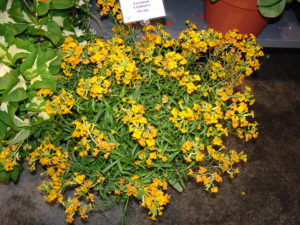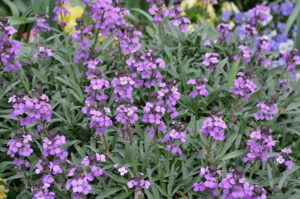In areas of the U.S. where winters are mild, Siberian Wallflower (Erysimum cheiri), (formerly Cheiranthus cheiri), is an early flowering favorite in the late winter garden. The species hails from Southern Europe (USDA hardiness zones 7-9). Many books list them as biennials and a few as “tempermental perennials”.
Wallflower is a woody-based herbaceous perennial subshrub in the mustard family (Brassicaceae). They produce clusters (racemes) of fragrant 4-petaled flowers in a showy floral display bloom in the early spring cool weather followed by narrow pendant dehiscent seed pods.
Wallflowers, depending on variety, grow to 6-24 inches tall and slightly less in width. Flowers (each to 3/4 inches wide) are mostly bright yellow or yellow-orange to brown, but sometimes appear reddish purple to burgundy. Bright green leaves (to 2-8 inches long by 3/4 inches wide) are narrow and pointed.
Wallflowers are easy to grow, adapting to most types of well-drained soil and in full to partial sun. Full morning sun is preferred in cool northern areas. Plant them in rock gardens. border fronts or in raised beds in late winter. Fertilize lightly after planting and when late winter/spring flowering begins. No serious insect or disease problems trouble wallflowers.



 Posted in
Posted in 
